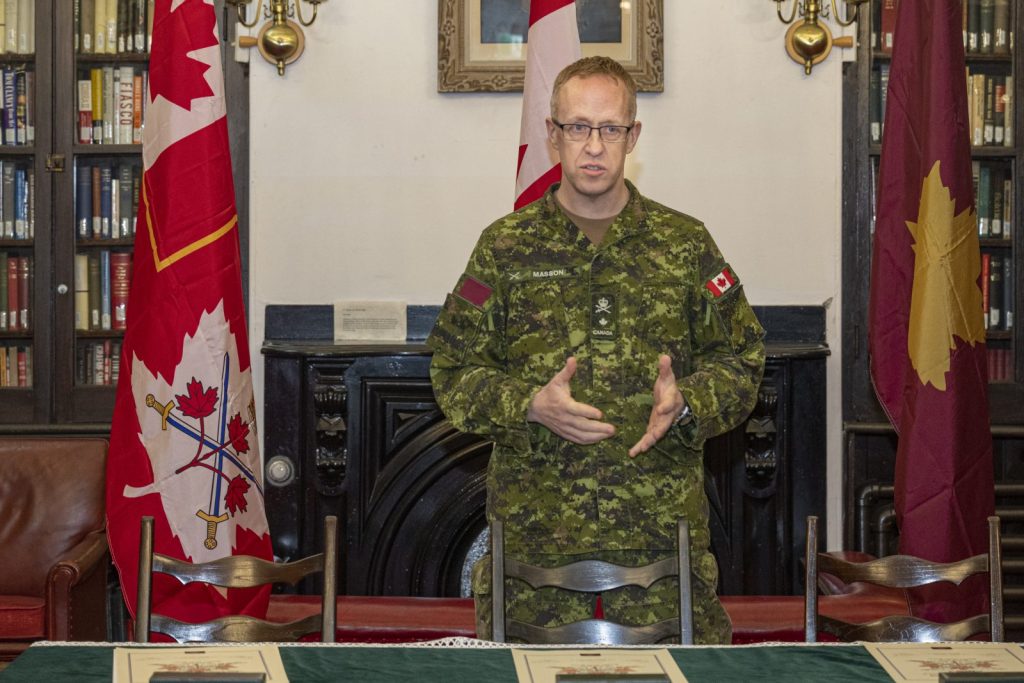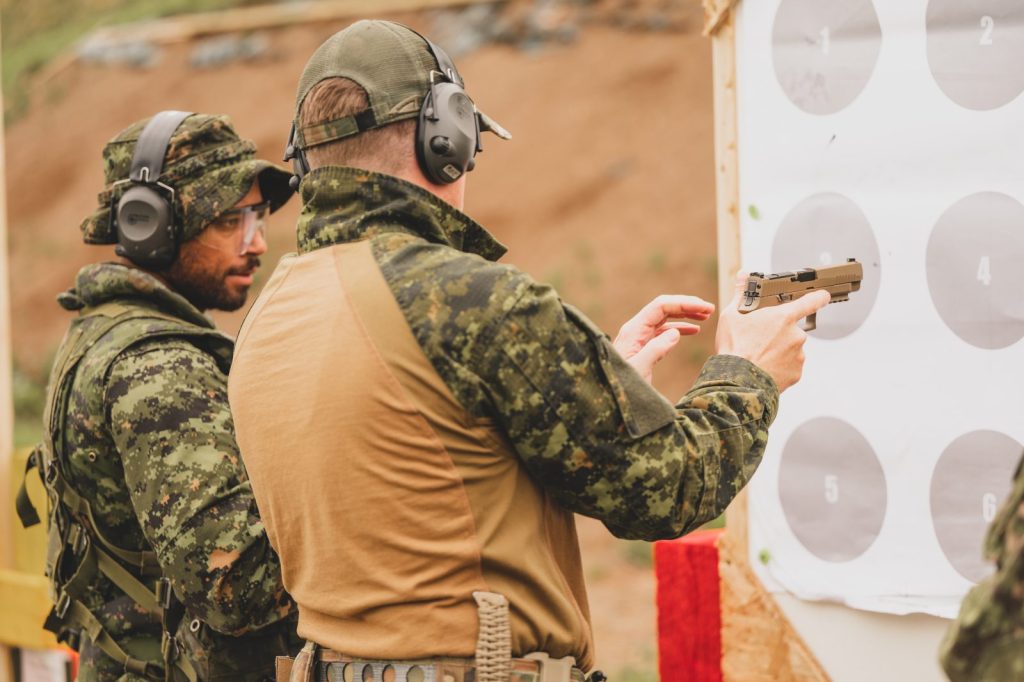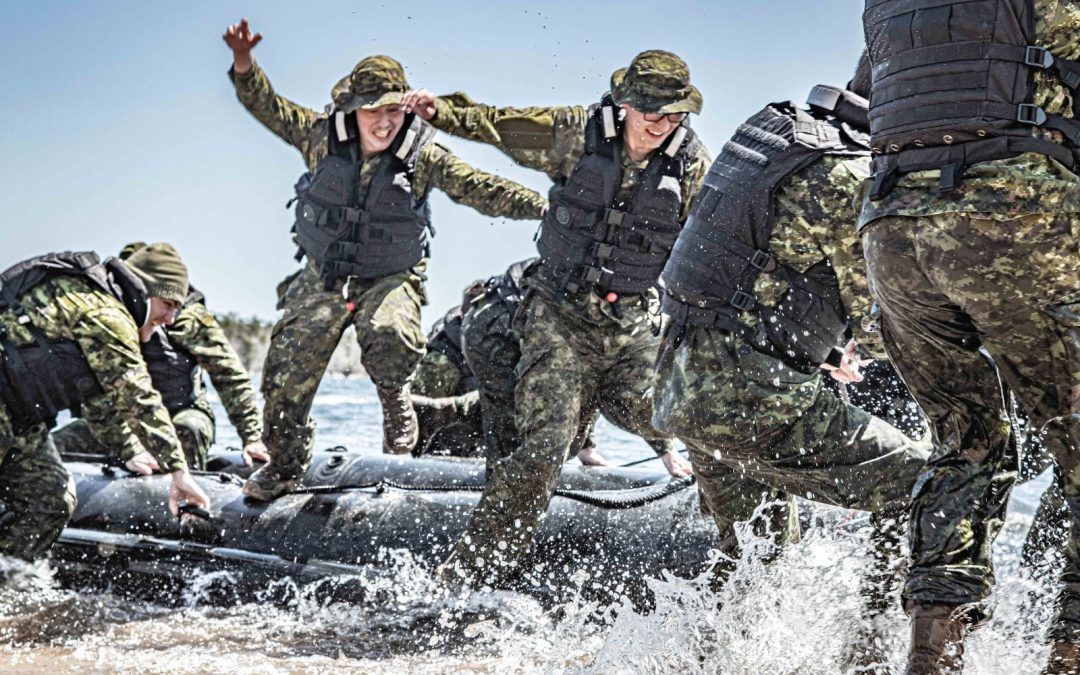by Tim Dunne
Once seen as the Canadian Army’s “Cinderella,” Fifth Canadian Division (5 Div) has undergone growth, transformation, and reorientation under a series of transformational leaders.
From the 1967 Canadian Forces Reorganization Act until Sept. 1, 1991, it bore the title Atlantic Militia Area, largely reserve with a modest regular force support complement. With the nation-wide reorganization of the Army’s regional command structure, the militia areas disappeared, and the region’s Regular and Reserve units were integrated under the senior Army officer within Canada’s four areas – Atlantic, Quebec, Central (Ontario) and Western (Manitoba, Saskatchewan, Alberta and British Columbia).
A new name, Land Force Atlantic Area, reflected new responsibilities. It integrated the Reserve force component with the Canadian Ranger Patrols in Newfoundland and Labrador, and Regular force infrastructure within the Atlantic Provinces. In 2013, it was rebranded Fifth Canadian Division.
On July 16, 2022, Brigadier-General Stéphane Masson assumed command of the division and the stewardship of the continuous process of modernizing the Army within his jurisdiction.
“Fifth Canadian Division has evolved over the last few years,” Masson explained. “We have two reserve Canadian Brigade Groups, 36 and 37. But we also have the newest regular force brigade, Six Canadian Combat Support Brigade. Six Brigade is an integral part of 5 Div and the Canadian Army, even though it is spread over seven provinces, with its headquarters in Kingston, ON.
“Through 6 Brigade, we provide unique capabilities not found elsewhere in the Army, and we provide it to First, Second and Cinquieme (Fifth) Brigades. Everything that 6 Brigade provides is unique to the Army and unique throughout the Canadian Armed Forces (CAF).”

Brigadier-General Stéphane Masson
Fifth Division’s regular force component is 2,300, Canadian Rangers number 1,150, and 3,200 Primary Reserves, all supported by 650 civilian members.
“A Canadian Army division’s fundamental role is to support both the Army and the CAF, from both an expeditionary perspective and domestically. So, if I were to put it in an overall framework, we are to become more agile, scalable, and responsive. We need to learn, or perhaps more accurately, relearn how to be small and agile,” he said. “The principal challenge with deploying larger units is that takes so much time, too much time, to mobilize.
“This is the philosophy that I have implemented in the division. So small teams tomorrow, rather than the 100% solution too late.”
The CAF as a whole is facing stark problems with which the entire Army must contend, Masson acknowledged.
“Our number one priority is people. The Chief of the Defence Staff was quite clear about this. We are in a staffing deficit. We don’t have enough folks. And when we look at what’s in the personnel pipeline, there is not enough people coming in.
“We need to take care of those who are in service now – those who have committed to serve. We need to make sure that they understand the needs of the service. Our job as leaders is to find the sweet spot between the needs of the service, the needs of the family members, and the needs of our members. We need to invest in the folks that we have. This is the number one priority.
“And, in meeting the demands of the contemporary Canadian Army, we have to recognize that the Canadian population mosaic is different than at any time in our history. Our composition must reflect that mosaic to broaden and deepen our strength and help us build the army we need for the future.
“Our next priority is readiness. Our team of Regular Force, Reserve, Rangers, and civilians must continue to be prepared to support operations at home and abroad. Whether that is domestic humanitarian assistance and disaster response, counterterrorism and peace support operations, or high intensity combat operations, our goal is to be ready when and to where we are called to deploy.”
That means keeping a cautious eye on the geopolitical horizon, Masson acknowledged.
“We have a well-defined mandate, and we can expect the [government] to assign additional resources and personnel to our partners in Eastern Europe. So, we are conducting detailed contingency planning to figure out what we can provide. I can assure you that once that call comes, this division will step up and deploy our unique capabilities overseas.”

The C22 9mm Pistol Train the Trainer Course at the Combat Training Centre at 5th Canadian Division Support Base – Gagetown in June 2023. Photo: MCpl Samuel Martell
Canada’s size, diversity and pluralism has always been its most visible attributes as well as its challenges, and 5 Div is not immune to the strictures of these factors.
“The fact that this division is spread over seven provinces challenges us to deal with different physical locations, so the span of control of my commanders is quite challenging. It is their responsibility to ensure that our folks are trained and well taken care of despite not seeing them face-to-face every week.
“It is challenging. But also from a Reserve force perspective, we are competing with civilian employers for people. We have challenges to attract younger Regular force retirees back into the service as Reserve force members. So much is related to the challenge of staffing. But the reality remains that we need talent, we need people who are dedicated to this business.”
As part-time soldiers, and contingent on circumstances, training reservists to the Army-wide standards of operational and tactical maneuver, field craft and effective use of a growing array of weapons and equipment can be an additional requirement.
“We train to the same standard right across the Army, whether it is a rifle, a howitzer or driving a truck. The standard is the same,” said Masson. “However, the way that we differentiate full-time and part-time soldiers is their proficiency level. If there’s a requirement to mobilize that part-time soldier into a full-time cadre, we will give them up to six months of full-time employment to attain that proficiency level necessary for either domestic or expeditionary employment. We have done that with great success in Afghanistan and other theatres.
“We have 5 Div soldiers in Latvia (Operation Reassurance), and in the Middle East as part of Operation Impact. Soon we will deploy troops to Poland to support Ukrainian Armed Forces training and capacity building for Operation Unifier.”

Candidates from 4th Engineer Support Regiment’s Light Armoured Vehicle VI Crew Commander Course conduct their field training exercise at 5th Canadian Division Support Base – Gagetown in June 2023. Photo: MCpl Samuel Martell
The division’s soldiers, commanders and commanding officers are keeping an eye on the worrisome events in Europe. Russian aggression in Ukraine violates international conventions that have been in place since the October 1648 Treaty of Westphalia, which ended the Thirty Years’ War and solidified international frontiers in much of Europe. Russian aggression also poses an existential threat to the peace and security of the rules-based international order.
“We are affected,” Masson said solemnly. “We are going through contingency planning to be able to reinforce our current commitment in Eastern Europe whenever we are called upon.
“We are learning from our partners’ successes and their lack of success. We are adapting our training to ensure our soldiers are ready to face this threat in the European theatre. While maintaining our commitments to support humanitarian and disaster responses at home.
“So, for now we just wait. But when the call comes, we will be ready. We did this for Op Lentus when this division stood up and answered a call to support three of the four Atlantic provinces after Hurricane Fiona. Fiona recovery was the largest, most complex domestic operation that the division had to support, and I am personally proud to say that my soldiers did that with great success. We had Regular force teams and Reserve members that mobilized to a full-time cadre, as well as the Canadian Rangers who made an impressive contribution in southwestern Newfoundland.”
The Rangers were recognized as an important element in Canada’s national security architecture with Perrin Beattie’s 1987 defence white paper, Challenge and Commitment. Comprising Canadians living in the many communities dotted along the northern and Atlantic coastline, “the Rangers give us the sense, and the minute-to-minute reassurance Canadians expect,” he said.
While preparation for international conflict has become a major preoccupation for 5 Div’s senior leaders, domestic responsibilities remain front and center.
“We take training for domestic response very seriously. We have a dedicated training plan and pre-positioned equipment in strategic locations across the region. When the call comes for the most common tasks such as flooding, hurricanes or blizzards, our troops are ready.
“It is a story we need to get out to inspire diverse and talented people to join our ranks. By connecting with people in the communities where we live and work, we can share what we do on behalf of Canadians and hopefully get them to want to be a part of what we do. We need people who want challenge, people who can work in a team, and [people who] are capable of taking a leadership role. We need talented people from all walks of life and backgrounds, and we need them now.”
Major Tim Dunne, CD, is a retired public affairs officer. His service includes peacekeeping and peace support operations in the Middle East and the Balkans. He is the recipient of numerous awards, including a citation from the Privy Council of Canada.


“The Rangers were recognized as an important element in Canada’s national security architecture with Perrin Beattie’s 1988 defence white paper, Challenge and Commitment.”
Indeed they were. However, Challenge and Commitment was released in 1987.
Thank you. Correction has been made.
Except they aren’t. A few folks who do 2 weeks a year. Ya super soldiers..
Great article from an old friend! Tim has maintained his well-balanced touch. Very informative work.
“It is a story we need to get out to inspire diverse and talented people to join our ranks. By connecting with people in the communities where we live and work, we can share what we do on behalf of Canadians and hopefully get them to want to be a part of what we do. We need people who want challenge, people who can work in a team, and [people who] are capable of taking a leadership role. We need talented people from all walks of life and backgrounds, and we need them now.”
Great article Tim. However the commander’s quote in the last paragraph rings hollow when there is no mention of support to the Canadian Cadet Organization or Junior Rangers a primary tool to reach community.